Main menu
Common skin conditions

NEWS
Join DermNet PRO
Read more
Quick links
Author: Dr Anthony Yung, Dermatologist, Hamilton, New Zealand; Dr Paul Jarrett, Middlemore Hospital, Auckland, New Zealand, May 2016.
Introduction Demographics Causes Clinical features Diagnosis Treatment Outcome
Circumscribed palmar hypokeratosis is a rare, persistent, solitary, red patch of thin skin on the hand.
About 50 cases of circumscribed palmar hypokeratosis have been described in the medical literature to date. It predominantly affects women in the 4th to 7th decade of life. A congenital case has been described.
The cause of circumscribed palmar hypokeratosis is unknown.
Circumscribed palmar hypokeratosis most commonly arises on the thenar or hypothenar eminence of the palm, the sole of the foot (plantar aspect) or less commonly the palmar aspect of fingers. Very rarely it can affect the skin of the dorsum of the fingers or non-acral sites of skin. There are a few reports of cases with more than one lesion affecting both palms or palms and fingers or palms and soles.
Circumscribed palmar hypokeratosis has a central pink area of thin atrophic, smooth or slightly scaly skin, while at the edge there is an abrupt transition to normal skin.
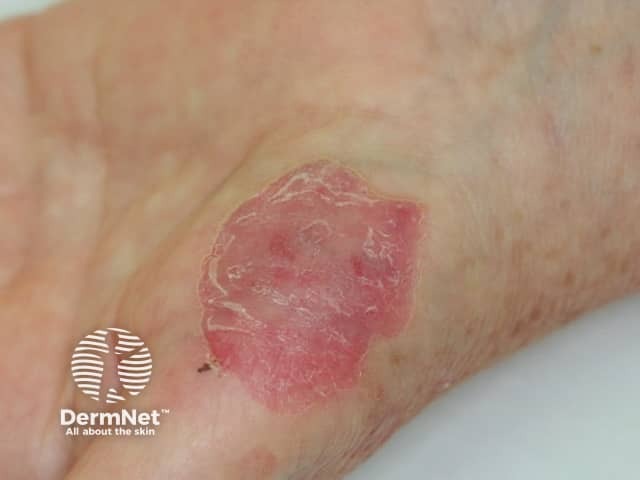
Circumscribed palmar hypokeratosis
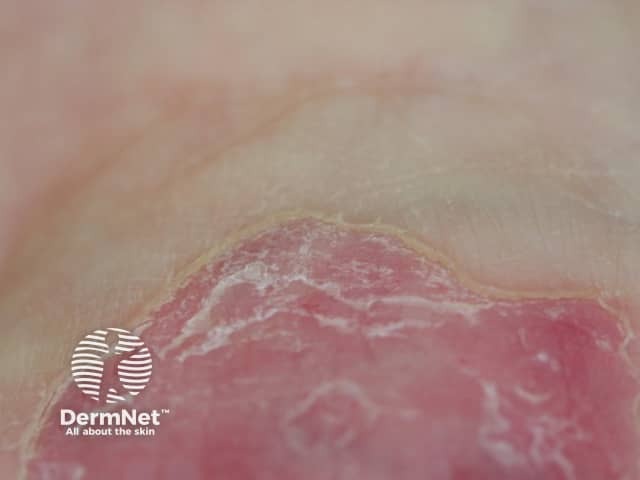
Circumscribed palmar hypokeratosis
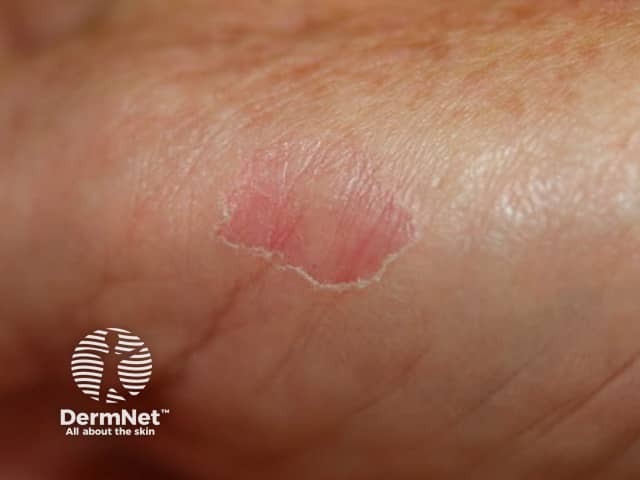
Circumscribed palmar hypokeratosis
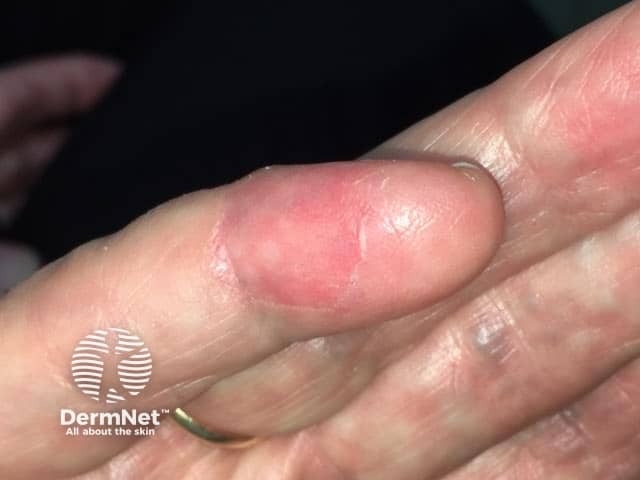
Circumscribed palmar hypokeratosis
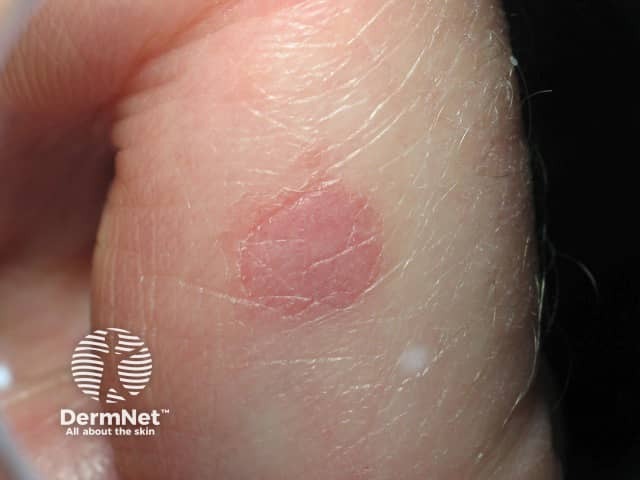
Circumscribed palmar hypokeratosis
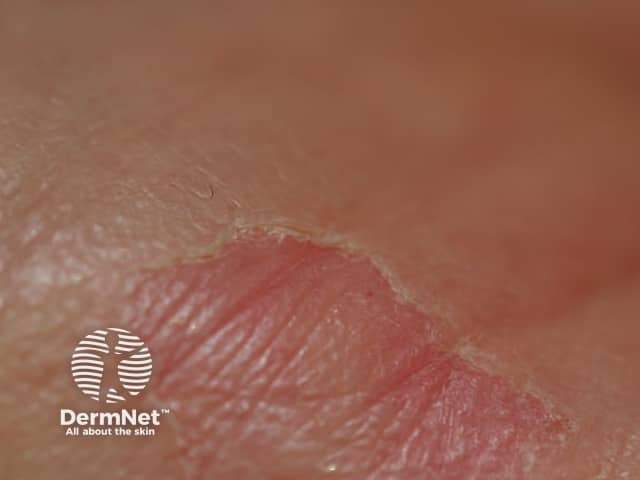
Circumscribed palmar hypokeratosis
Circumscribed palmar hypokeratosis can be diagnosed on its distinctive clinical appearance.
A biopsy may be taken across the edge of a lesion. This shows the epidermis in central area of affected skin lacks stratum corneum (horny layer). At the edge of the lesion there is a very sharp abrupt transition to the normal compact orthohyperkeratosis typical of palmar skin. There are no histological findings to suggest HPV infection.
The main differential diagnoses to consider in circumscribed palmar hypokeratosis are porokeratosis and squamous cell carcinoma in situ.
No treatment is required for circumscribed palmar hypokeratosis. However:
Circumscribed palmar hypokeratosis is a chronic condition which persists unchanged over time or may very slowly enlarge. There are no reports of cancer developing within the lesions.